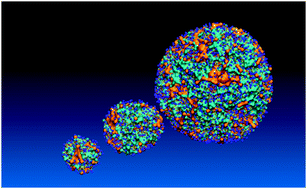Current challenges in atomistic simulations of glasses for biomedical applications
Abstract
Atomic-scale computer simulations have emerged as a powerful tool to probe at a very high resolution the structural and dynamical properties of amorphous and crystalline biomaterials with a direct impact on their biological activity. In particular, bioactive glasses (BGs) represent a target of high strategic importance for the simulations, due to the central role that they play in the broad arena of materials for repairing and regenerating tissues. Simulations aimed at understanding the properties of bioactive glasses thus reveal the potential, and also the limitations, of computational approaches to support the rational development of biomaterials. This perspective article examines several key challenges that computer simulations of BGs are currently dealing with and that will need to be effectively tackled in order to achieve further substantial progress in this field. Relevant examples are the identification of new structural descriptors, the modelling of ion migration, and the simulation of nanosized samples, which are discussed in relation to the underlying issues, such as the limited space and time scales that can be probed in atomic-scale simulations.


 Please wait while we load your content...
Please wait while we load your content...